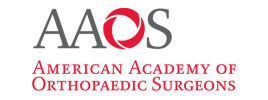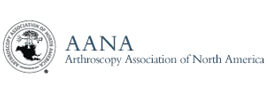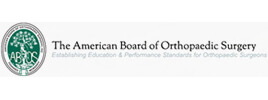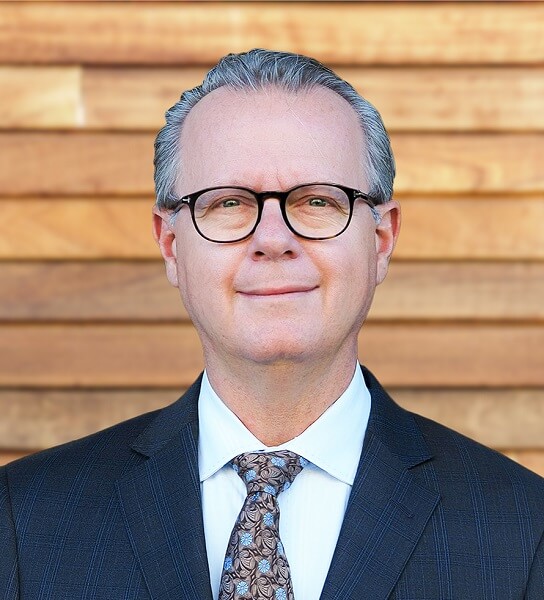Location
OrthoArizona – Deer Valley
2902 W. Agua Fria Freeway, Ste. 1090
Phoenix, AZ 85027
Physician Assistant
Contact Office
623.848.4711
Contact Medical Assistant
623.848.4711 Ext. 5107
Residency
State University of New York at Buffalo Affiliated Hospitals
Medical School
School of Medicine & Biomedical Sciences, University at Buffalo, The State University of New York Sciences
Hospital Affiliations
The CORE Institute Specialty Hospital
HonorHealth Deer Valley
Steven R. Kassman, MD
Total Joint & General Orthopedics
Dr. Kassman is certified by the American Board of Orthopaedic Surgery. Areas of specialization include robotic assisted total hip, total knee, and partial knee replacement, as well as shoulder and knee arthroscopy. He has significant experience providing destination orthopedic care. Since 2012 he has performed over 1000 hip and knee replacements for patients who traveled from around the continental U.S., Alaska, Brazil, Canada, Central and South America, Asia, and the Middle East for his expertise. Dr. Kassman’s practice also focuses on industrial injuries. He is a long time orthopedic specialist consultant for a national company, and several local entities, dedicated to industrial medicine. He received his undergraduate degree from Cornell University and his medical degree and orthopedic residency training from the State University of New York at Buffalo. He is a fellow of The American Academy of Orthopedic Surgeons, The American Association of Hip and Knee Surgeons, and The Arthroscopy Association of North America. He has practiced in Phoenix since 1993.
Dr. Kassman’s Philosophy
My goal is to provide you, my patient, with an experience that is earnest, thoughtful, and certainly worthwhile. I believe that you will find me to be honest, straightforward, hard working for your best interest, and skilled as a surgeon. You are an individual and care will be specific for your problem and needs. Together our goal will be to create a treatment plan that is effective and as efficient as possible with your time and money.
The Most Complete Treatment
Part of my practice philosophy is also to be accommodating and complete in my treatment. Sometimes that accommodation is for the patient who has an emergency or maybe one who requires an unplanned procedure, such as a cast, injection, or x-ray, during their visit in order to relieve pain and initiate treatment. These accommodations can sometimes result in an erratic office schedule. The benefit for my patients is that those in greatest need are helped as soon as possible and care is thorough and complete. One never knows when they will be the patient in need of such flexibility.
If my schedule ever creates a situation where I am behind, I promise to you that your visit quality will not be compromised or rushed and that I will listen attentively and do my best to solve your problem once our visit begins. I will respect you as well as the time, effort, and expense that you have committed to me and my practice.
Services Offered
- Robotic Assisted MAKOplasty Partial Knee and Total Knee/Hip Replacement
- Minimally Invasive Joint Replacement
- Arthroscopic Knee and Shoulder Surgery
- Industrial Injuries/Workers Compensation Orthopedic Consultation/Care
Welcome Canadian Patients
My practice provides foreign visitors with a comprehensive approach to every facet of destination orthopedic care. With more than 1000 patients since 2012 from around the world, my team of staff, hospital partners, and dedicated support professionals, can help organize travel, diagnostic testing, accommodations, rehabilitation, and local transportation. Patients benefit from advanced technology, top quality products, and a group of medical professionals with proven successful experience managing those traveling for orthopedic care.
- Robotic Assisted Full and Partial Knee Replacement
- Robotic Assisted Hip Replacement
- Arthroscopic Shoulder and Knee Surgery
Read More: Medical Tourism and Cash Pay
Read More: Medical Tourism: A Canadian Patient’s Perspective
Have you been told, in your home country, that the surgery you need is either not available, or has a long wait list?
My team and I can help. With dedicated operating room time 3-4 days per week patients can frequently be accommodated within 2-4 weeks from the time of initial phone consultation. Typically the process starts with my review of diagnostic testing (usually x-rays or MRI uploaded to our secure portal or mailed to Phoenix) followed by a phone consultation with me. The diagnosis and treatment options are discussed and a plan/timeline is created. My staff help you coordinate every aspect of process from preoperative testing, travel and lodging guidance, surgical details, and post-operative rehabilitation. Whether you have knee, hip, or shoulder pain my team and I are equipped to provide you the innovative, proven, and comprehensive treatment plans. Stop waiting in pain and come visit Phoenix, Arizona today!
Post-Op Instructions
Day of Surgery
These procedures are typically performed on an out-patient basis. That means that you will come into the hospital and go home on the same day. A general anesthetic is used, sometimes in combination with a “regional anesthetic” or “pain block.” There are several reasons why a particular patient may or may not be given a regional anesthetic. The anesthesiologist and I will review this issue with you on the day of surgery. In all cases, even if a pain block is not used, a local anesthetic will be used at the surgical site to help decrease postoperative pain. The surgical procedure usually takes several hours with the exact length depending upon the extent of damage and needed repair. Patients will be in a sling or “shoulder immobilizer.” Sometimes a so called CTU or Cold Therapy Unit will be placed in an attempt to help decrease postoperative pain and swelling. The nursing staff and I will make sure you understand how to manage your immobilizer and CTU prior to discharge home.
Activity Once You Return Home
Most patients following any significant shoulder reconstruction surgery are not comfortable sleeping flat or lying down for a number of weeks post-operatively. They usually will need to sleep in a in a reclining chair or propped up with pillows in bed. Details will vary by specific procedure but generally activity instructions are to be in your immobilizer at all times except when sitting in a protected position or while performing your prescribed exercises. It is important to move the elbow, wrist, and fingers. They can rapidly become stiff, even though the surgery was done on your shoulder, if they are not moved. I tell patients that they will need to focus on rehabilitating their shoulder and they do not want to be distracted by unnecessary stiffness in other parts of their arm. Another benefit is that you will also be more comfortable if you spend some time out of the sling moving your elbow up and down. You should not put weight on your operated arm in order to push yourself up from sitting. You should not lift, reach, or carry things with the repaired arm until given clearance by me to do so.
Wound Care
The dressing placed in the operating room on your shoulder should be left in place and kept dry until the third day after surgery. On that day you can remove your bandage all the way down to the skin. Depending upon the procedure there typically will be some number of poke holes about the shoulder (usually 3 to 6) each closed with one or several black stitches. You can shower on this third day, then simply pat the wounds dry and cover them with Band-Aids. You should follow your activity restrictions while in the shower and resume immobilizer use as directed above once dressed. When it comes to dressing you should place the operated arm through the shirt sleeve first when getting the shirt on and remove it last when taking the shirt off. This way you do not have to reach with the arm and can maintain your activity restrictions. The sutures are removed at the first follow up visit which usually is scheduled 4 or 5 days after surgery.
Post-Operative Pain Management
Pain blocks referred to above can be helpful although I caution my patients that sometimes they are a little like light switches. They can go from on to off fairly quickly and catch patients off guard with their pain. If you have had a block, or even if I have just injected local anesthesia at the surgical site, and your pain seems very well controlled when you return home I would encourage you to use a pain pill every 3-4 hours so that you have some baseline pain medication “on board” when the block wears off. I will typically give patients several prescriptions. One will be for a pain medication. This pain medication usually does not contain Tylenol that way I can give you a broader safe range of doses to take. You will be able to adjust your dosage as described on the bottle to help effectively manage your pain. You should start with the lower dose range and increase according to the directions if you pain is not effectively managed at the lower range. You should not take extra pain medication if you have significant sedation at the lower dose. You can add Tylenol at the doses outlined on the bottle to supplement your prescription pain medication. I do not want my repair patients using Motrin or so called anti-inflammatory medications in the early post-operative period as they may inhibit the inflammatory response that is critical to tendon healing. You may also be prescribed a muscle relaxant. This can work effectively with your pain medicine to improve your comfort. If you find that your pain is not adequately controlled you can call the office I or someone through my office will be available to assist you.
Rehabilitation/Post-operative Exercises
This begins either the day of surgery or the next day and initially is done by the patient with my direction. Especially with rotator cuff repair surgery current consensus opinion and scientific evidence both indicate that excessively early referral for therapy results in a lower rate of tendon healing which is not beneficial. For most reconstructive procedures the initial rehabilitation starts with what is referred to as passive range of motion. Passive range of motion means that the operated arm is being moved but the arm itself is not doing the work. The force needed to move the arm can be supplied by another person, like a therapist, but since most of us have two arms our non-operated arm works fine. In this way the patient gains control over their pain while lessening the chance of re-injury.
In my practice a typical arthroscopic rotator cuff repair patient begins the day after surgery with pendulum exercises as well as the elbow, wrist, and finger motion discussed above. You will lean forward and let the operated arm dangle loosely in front of you. The other arm will hold the operated arm at the wrist and gently move it in circles. This continues for 3-4 weeks. At this point so called “passive supine forward elevation” is added with the patient working to get the arm fully overhead by 6 weeks after surgery. With this exercise the patient lays down on a firm, flat surface—probably their bed—and uses the non-operated arm to progressively lift the operated arm overhead. It is important to relax the operated arm, bring it to a position where it feels tight and pain begins, hold it there while it stretches, then try to push it a little farther before bringing it back to the side. In this way the shoulder is gently progressively stretched and motion is safely regained. This then advances to active assisted followed by active motion and then lastly stretching and “terminal” or final stretching.
Active assisted exercises are where you begin to lift your repaired arm on your own, although initially with “assistance” again from your other arm. The primary exercise here is wall walking. It begins 6 weeks after surgery and at the same time your sling is discontinued. You will face the wall, place the hand of your operated arm on the wall with your other hand supporting beneath your elbow, then using your fingers “walk” up the wall getting help from your fingers, your support beneath your elbow, and now your repaired shoulder. You can also begin to use the arm without assistance at this point for dressing, bathing, and other so called ADL’s or Activities of Daily Living.
Physical therapy referral typically occurs at about this time 6-8 weeks after surgery for progressive stretching and initiation of strengthening. The length of this phase where we strive for full recovery and return to normal function typical lasts for between 4 and 6 months after surgery. This is variable from patient to patient depending upon factors such as severity of their injury and degree of pre-operative stiffness.
Post Op Recovery
& Rehab
Total Hip Replacement
Symptoms and Surgical Options
Total Hip Replacement
Process & Procedure

Dr. Kassman is proud to be a Fellow Member in the American Association of Hip and Knee Surgeons.

Dr. Kassman is proud to be a Fellow Member in the American Academy of Orthopaedic Surgeons.

Dr. Kassman is proud to be a Fellow Member in the Arthroscopy Association of North America.

Dr. Kassman is proud to be a Fellow Member in the American Board of Orthopaedic Surgery.










